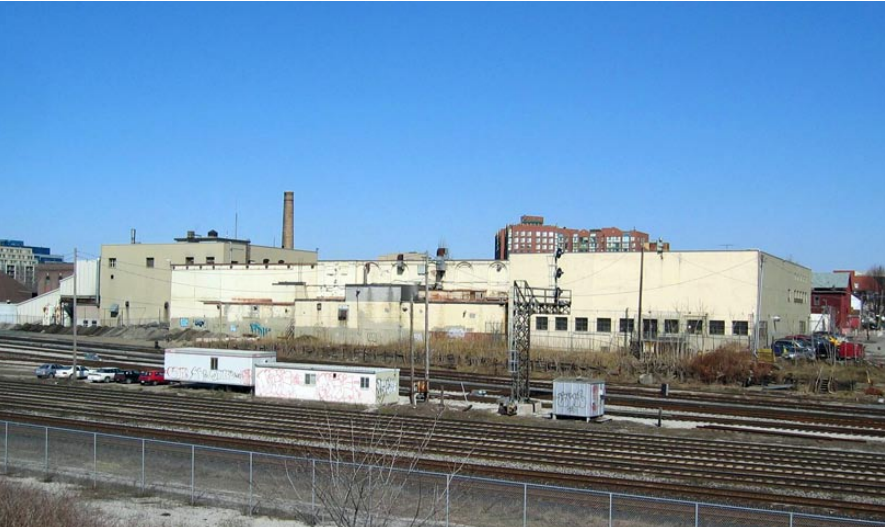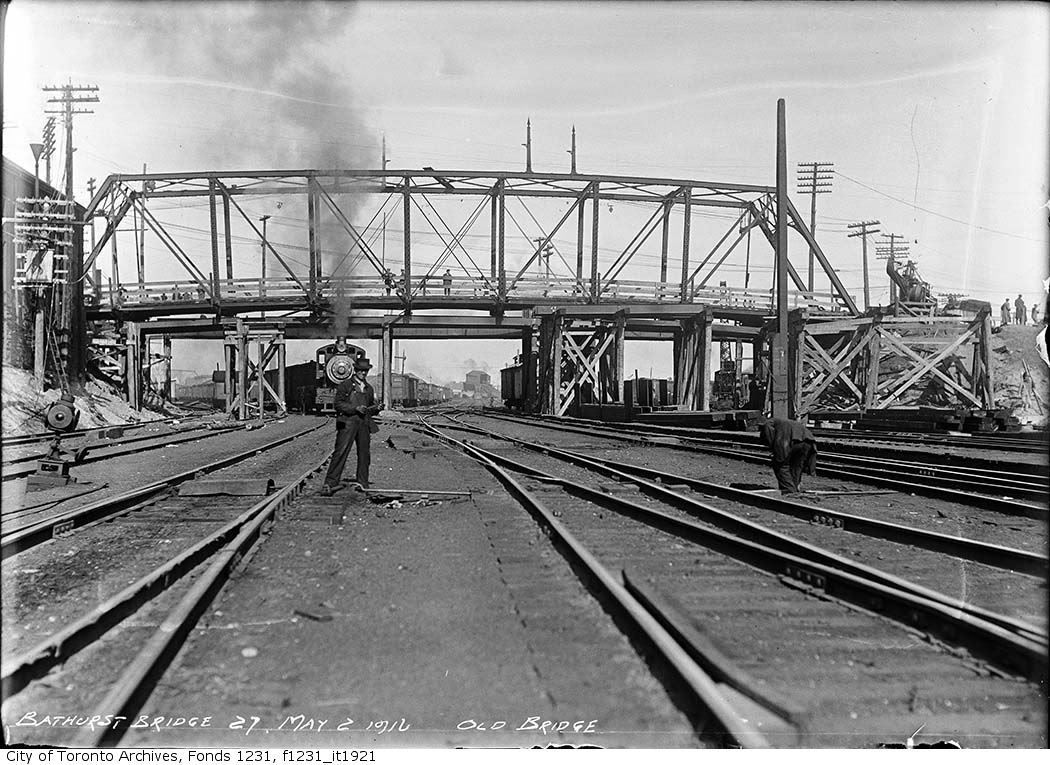Regular climbers at the Rock Oasis will be intimately familiar with these nearby neighbourhood landmarks, which inform and shape the character of the area.
Although discussing them doesn't really fit within the scope of the essay, these historical touchpoints nevertheless deserve mention for completeness, and to provide context.
If you're not interested in that and have had enough of ancient history, skip to the next section…
Read the next section:
Toronto Municipal Abattoir AKA Quality Meats
I can recall many a summer evening when the heavy stench from the nearby abattoir wafted in through Rock Oasis' doors. Ahh yes!
I'll miss it. It's the smell of industrial food production, and will forever be indelibly linked to my memories of climbing at Oasis.
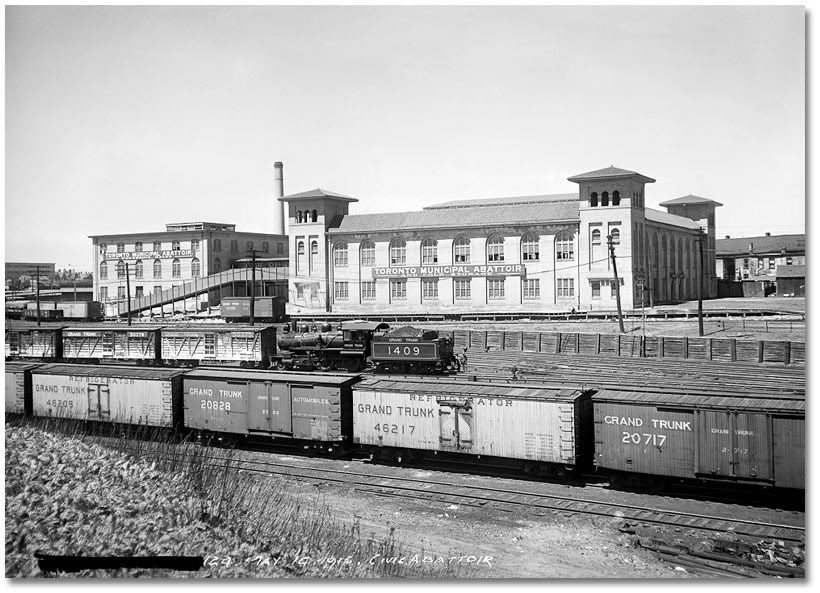 |
| Toronto Municipal Abattoir - photo by Arthur Goss |
The Western Cattle Market was established in 1877 on the south side of Wellington Street West just west of Tecumseth Street to replace the livestock section of the St. Lawrence Market on account of the growth of that area. It was served by the Grand Trunk Railway. It can be seen in the earlier 1890 Goads map.
[This should not be confused with Charles Blackwell's abattoir built in 1898 south of the Bathurst bridge, east of the Fort, demolished in 1929. AKA Matthews Laing, Matthews Blackwell, Canadian Packing Co..]
Council decided to build an abattoir on the site, designed by William Perrin, looking out on Fort York. The abattoir opened August 4, 1914, but was never quite profitable due to an upset in the meat trade caused by the war.
Eventually, the building was sold by the city to Quality Meats in 1960. Quality Meat Packers was a local business established by the Schwartz family in 1931, specializing in supplying top quality value added pork products under the 'Legacy Brand' to the Far East and domestic retail markets.
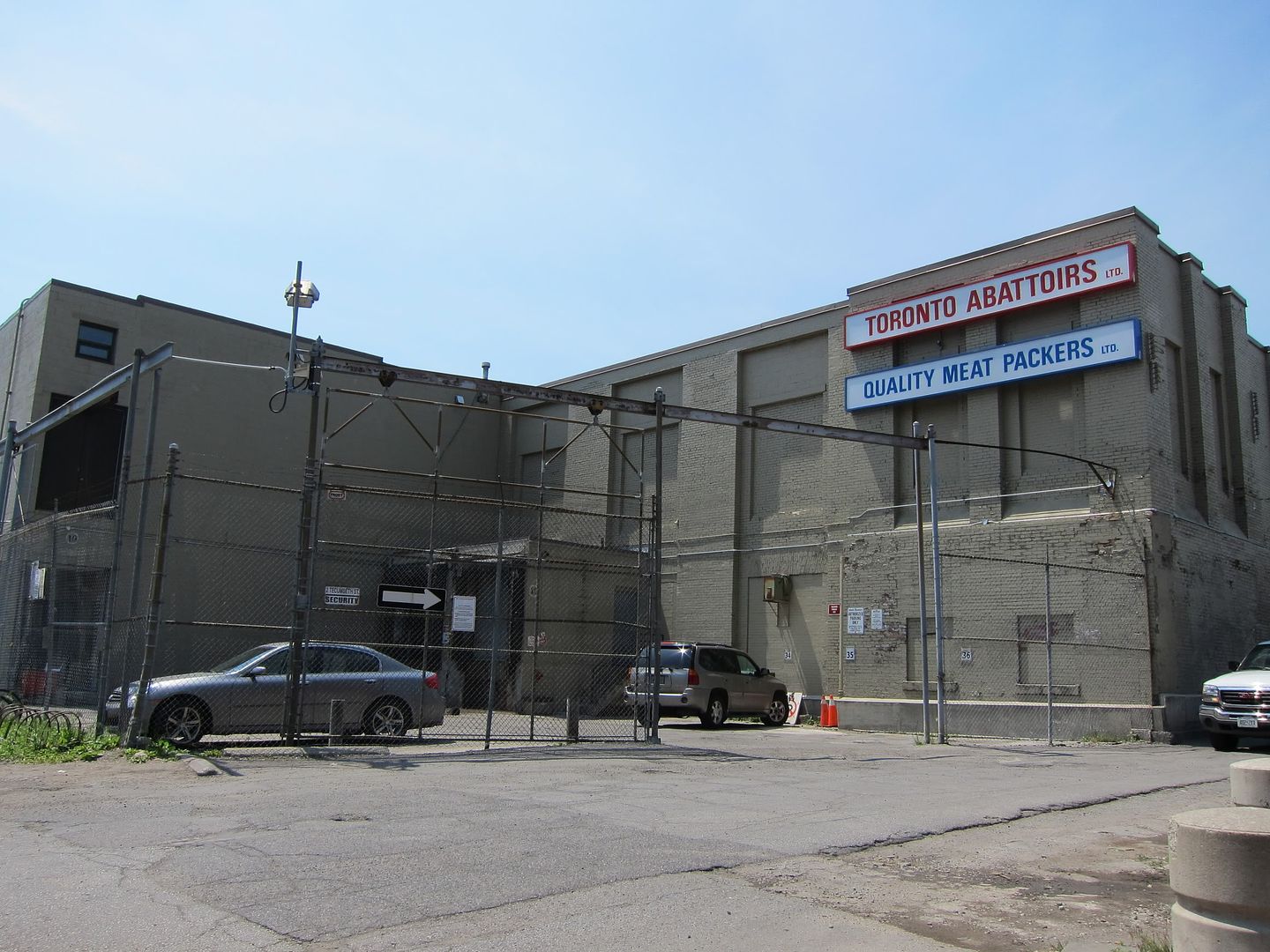 |
| Quality Meat Packers - since 1960 |
The ripe smell of the abattoir, which employs hundreds of people, has resulted in an often contentious relationship with the surrounding Niagara neighbourhood. To those condo owners who complain about it: you are miserable Johnny-come-latelys; get used to it. Why do you think Toronto is called Hogtown?
See also:
http://www.fortyork.ca/newsletter/F&D_Nws_10-08.pdf
1903 Bathurst Street Bridge
The Canadian Bridge Company built the current Bathurst Street Bridge in 1903 -- at the Humber River and Lakeshore. Weighing 750 tons, it was moved (!) to Bathurst in pieces and reconstructed in 1916.
 |
| Bathurst street bridge |
The overhead steel truss bridge was built to carry traffic over the rail tracks north east of the fort. It replaced an earlier, thinner steel bridge in the same location.
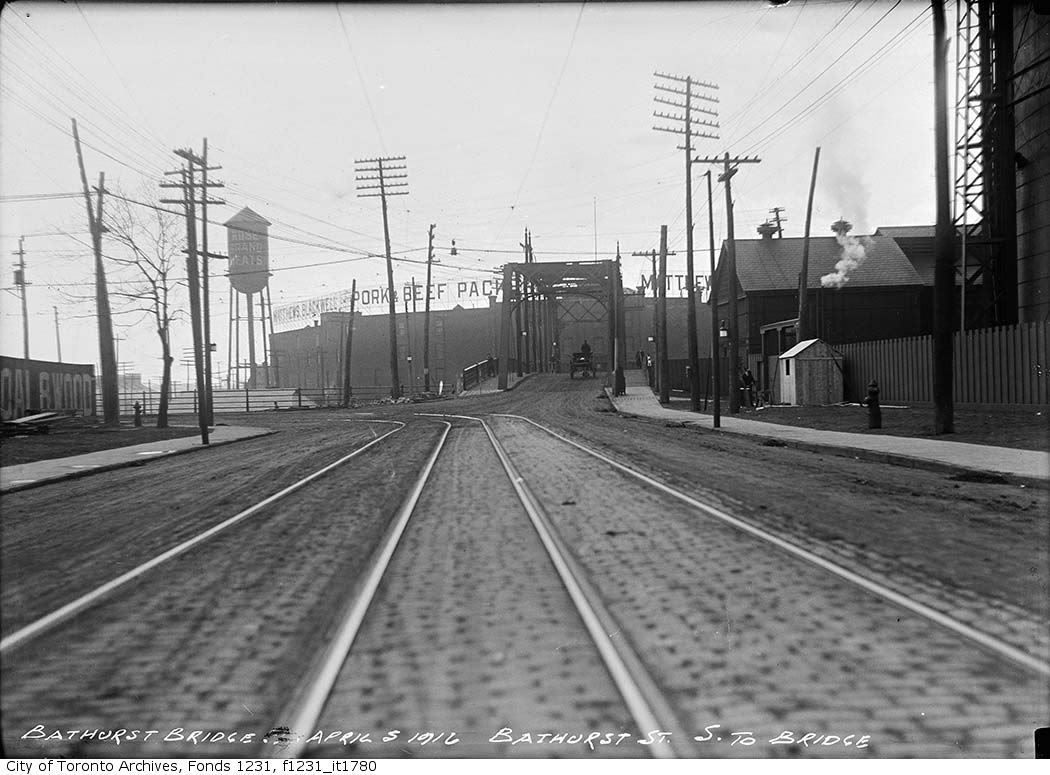 |
| April 5, 1916 - looking south from Bathurst to the old Bathurst Bridge. The Matthews and Blackwell abattoir complex is in the background. Note the sign for P. Burns Coal & Wood. |
The old, 'thin' bridge - side view from west
|
 |
| The Bathurst St. Bridge under construction in May 1916 - the Humber River bridge would be transported over |
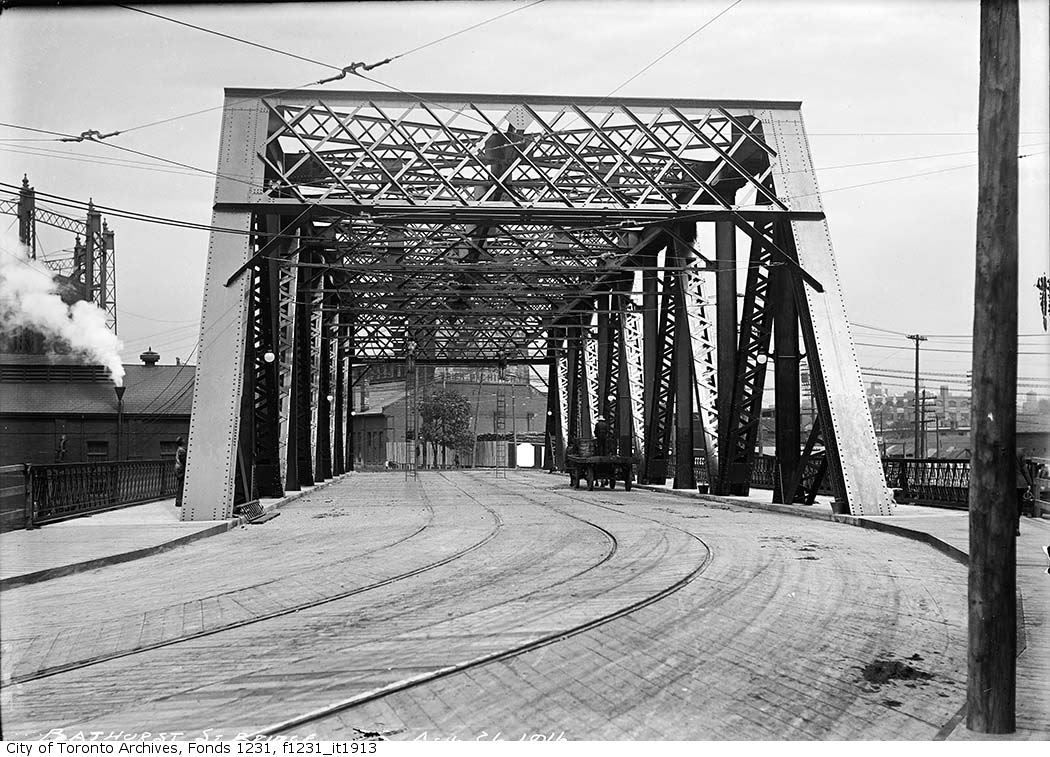 |
| August 21, 1916. (looking NE from south end) The bridge is complete, though still tilted SW |
The bridge originally angled west towards Fort York, and provided access to Fort York and the road to Queen's Wharf.
In 1931, the bridge was lifted and realigned 22 degrees east in order to accommodate the expansion of Bathurst St. south from Front. The pedestrian bridge to the East Gate of the fort was constructed in parallel. The bridge was listed as a historical structure in 1985 by the Toronto Historical Board.
It's also notable that the corner of Front and Bathurst (where the Bathurst Bridge begins), is where the now-dead Front Street Extension would have started. Killing the extension was thematically similar to stopping the Allen Expressway -- it would have changed neighbourhoods irrevocably. The setback required to support the Front Street Extension might very well have impacted Oasis and the Doty Works.
The Bathurst street bridge was renamed [by a rather obscure community council decision] in November 2007 to ‘Sir Isaac Brock Bridge’ after the hero of Upper Canada.
The Wheat Sheaf
Ahem.
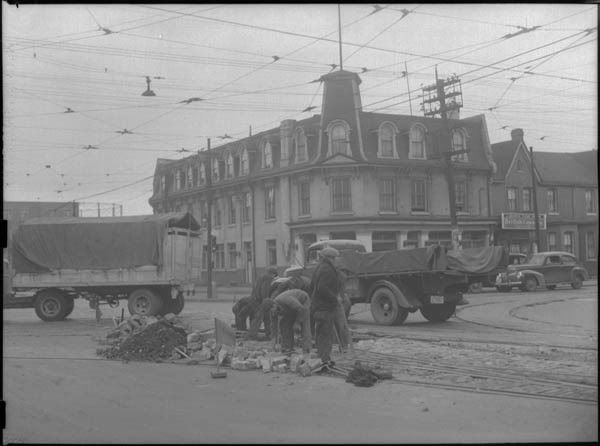 |
| The Wheat Sheaf in 1941. Photo Gordon Powley |
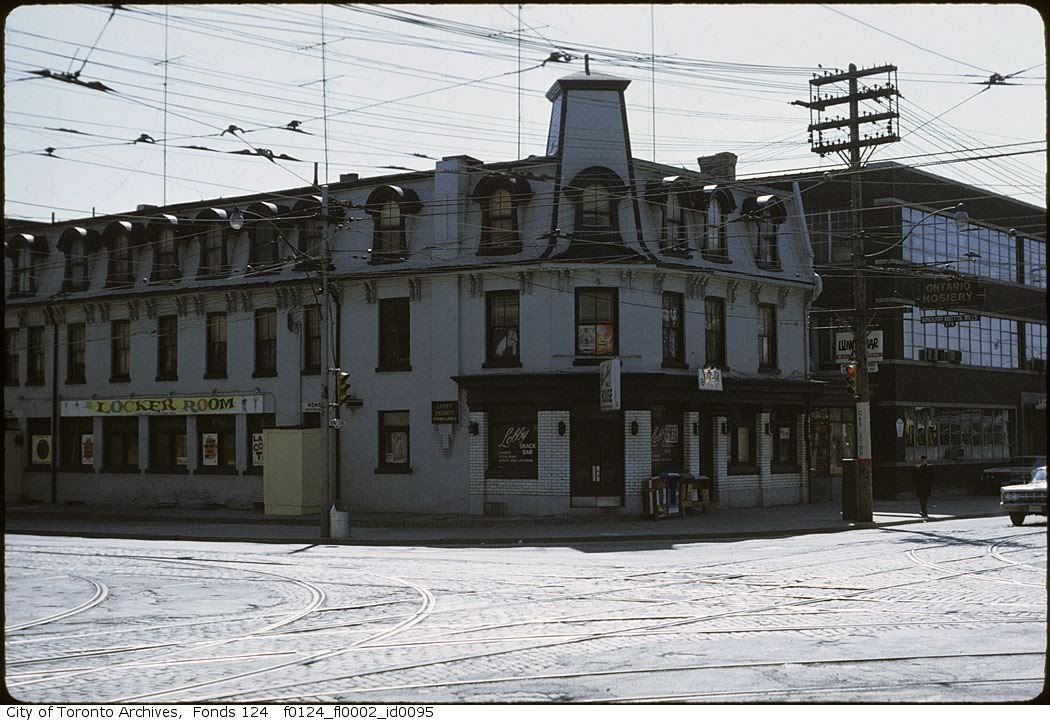 |
| Yeesh. Nice paint scheme. Somewhere between 1966-1972. Why is it called 'The Locker Room'? |
Do I really need to say anything? The Wheat Sheaf brands itself as Toronto's oldest bar, there since 1849. It was a men's only enclave until 1969.
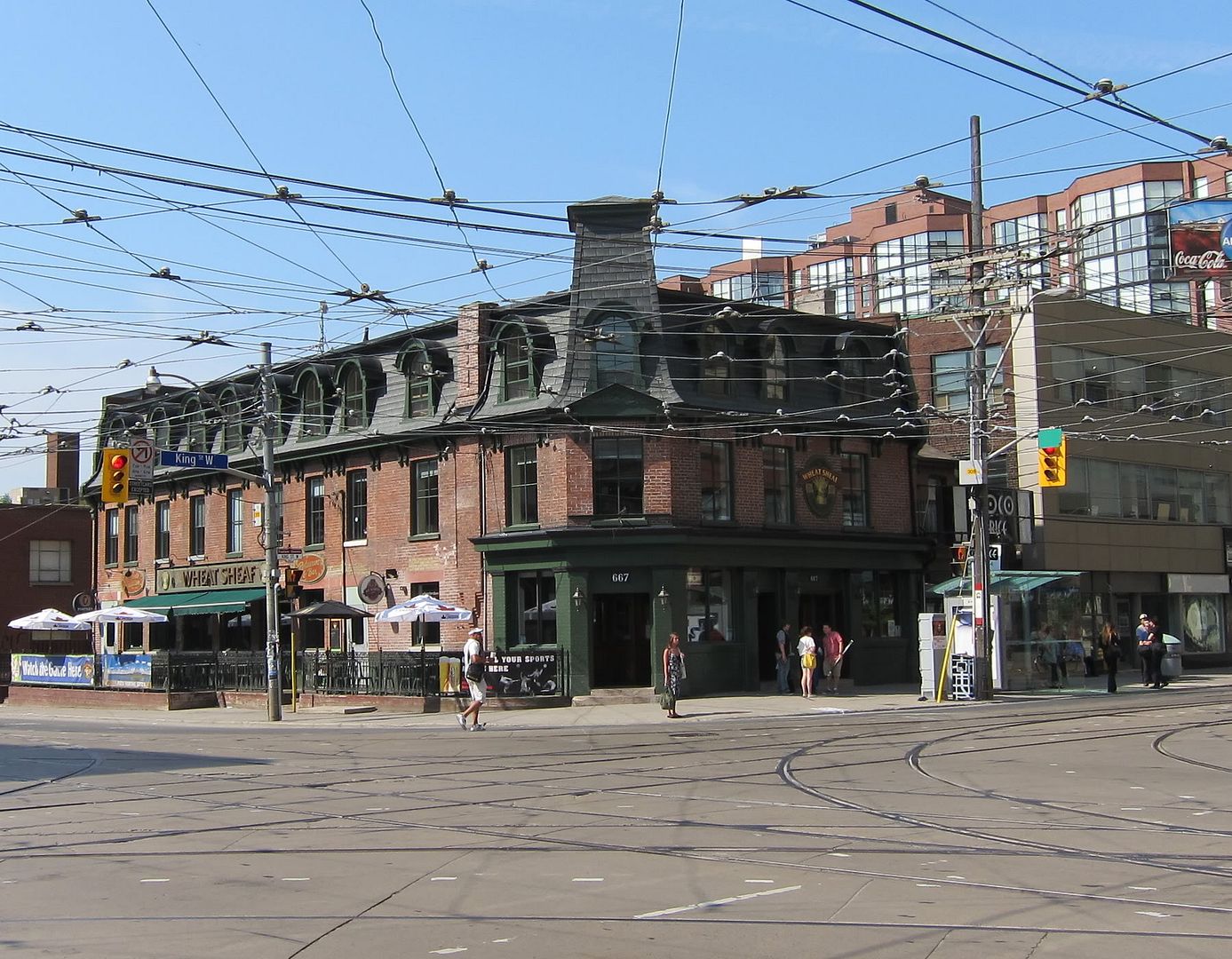 |
| The Sheaf has been spruced up recently... |
Legend has it that a secret tunnel was dug between the fort and the Wheat Sheaf, but a glance at the distance involved dispels that fanciful notion -- the effort involved would have been incredible. Particularly since, as we have discovered, there were closer taverns.
I spent a lot of sprawling nights at the Wheat Sheaf, breathing in the smoky air, eating half-price wings, yelling over the music about climbing sequences...
Fort York
Fort York is central to any discussion of the city's history. I have deliberately glossed over the Fort, because there has been so much covered elsewhere on the topic. Historical information regarding the Fort can be found at www.fortyork.ca, or at the city's website for the Fort, www.toronto.ca/culture/museums/fort-york-history.htm.
 |
| Fort York in 1931. The Doty Engine Works (visible at far left) was a neighbour of the Fort for over a century! |
 |
| Iconic Fort York blockhouse |
Fort York is a key part of our Canadian heritage. I urge readers to take the time to visit Fort York and reflect upon what might have happened had the Americans decided to stay…
Other Local Structures
There are a plenitude of historical structures (some surviving, others demolished) in the area that I have not covered in this essay. e.g.
- The Elias Rogers coal yard (now gone) just north of the (west) Doty works.
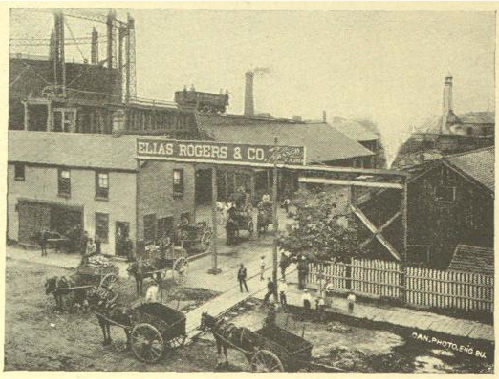 |
| Elias Rogers Coal Yard - a competitor of Patrick Burns, across the street on the west side of Bathurst. Judging from the angle, this photo was taken from the corner building at Bathurst and Niagara. Note the railway siding (where the two men are standing, and the cart appears to be blocking) -- it leads across Bathurst and into the Doty Works. The chimney in the back possibly belongs to the original Doty Machine Works south-west of the yard (see the 1890 Goads map)... Photo 1891, G. Mercer Adam, Toronto Old and New |
- The Blackwell Meat Packers plant (now demolished)
- The National Casket Company factory:
- The American Hat Frame building:
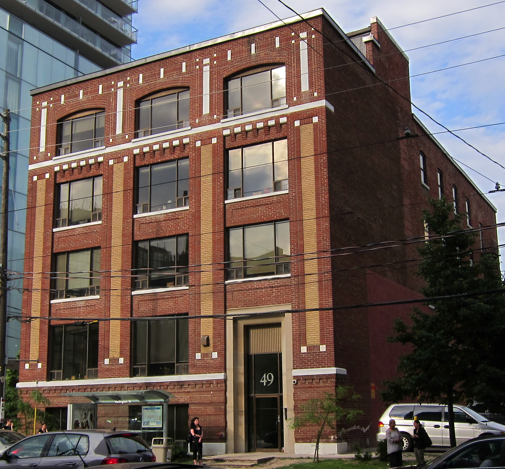 |
| American Hat Frame building - Looking good! |
If I skipped your favourite building -- sorry! There was only enough time to cover the buildings I had an interest in…
Mishaps and Mayhem
Accidents were inevitable in a place of industry. The Doty Works have seen all kinds of mishaps. Herein a brief selection:
When The Place Nearly Burned Down
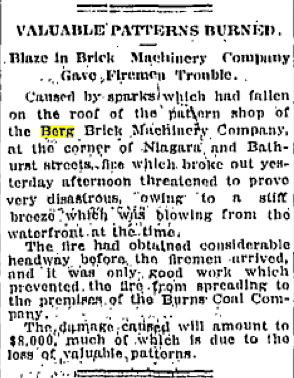 |
| Sept 13, 1916 Globe |
Gillian's Broken Arm Results in Suit
"While in the employ of the Bertram Engine Works John Gillian had his arm broken. He alleges negligence against the company, and to-day, through his solicitors, Davis, Cook & Smith, issued a writ for $5,000 against them"
Oct 2 1900 Toronto Daily Star
Boiler Makers Strike!
 |
| June 5, 1902 Toronto Daily Star |
Has anyone ever died? - Pancott Fell Dead
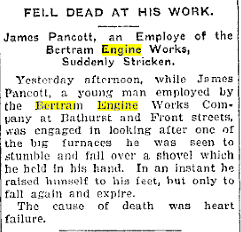 |
| July 12, 1901 Globe |
"TO BE TRIED BY A JURY. James Bell's Case for Damages against the Bertram Engine Works. For injuries sustained on the 7th of June last, while in the employ Bertram Engine Works, James Bell, a driller and machinist, asks $3,000 damages. A motion of the defendant's to strike out the jury notice was today refused by the Master in Chambers" Toronto Daily Star, 1914Arthur Milton's Fall
"In a fall from the roof of a blacksmith shop at the Berg Brick Machinery Co., Bathurst street, Arthur Milton, 7 Reynolds Place, sustained injuries to his back. He was taken to Grace Hospital."
-Globe, Tuesday Feb 17, 1914
Piston Explodes!
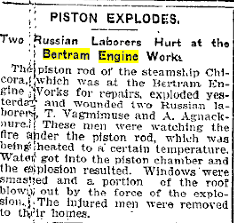 |
| Nov 16, 1904 Toronto Daily Star |
Umm, make sure you double-check your figure-eight knot before climbing?
Read the next section:
You're reading: Farewell to Rock Oasis, the secret history of my home climbing gym.
Table of Contents
Like, Share, or Comment on this post!

